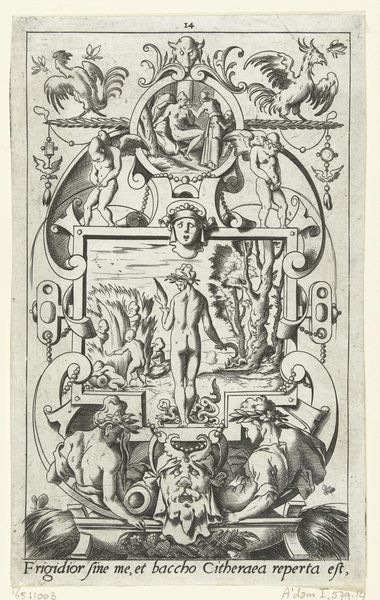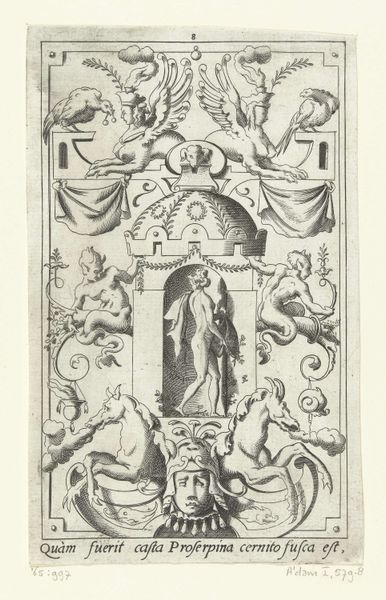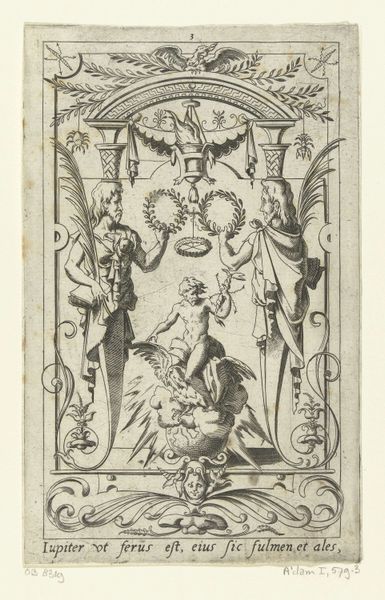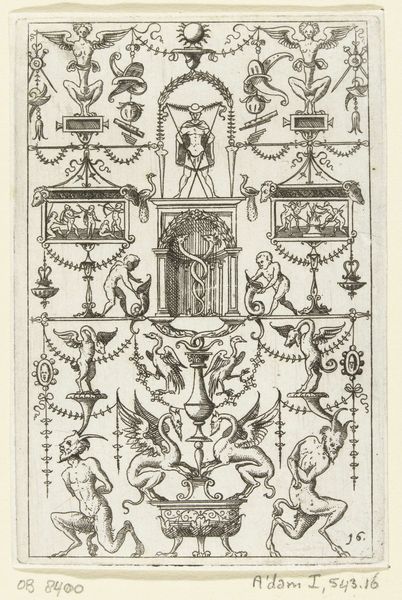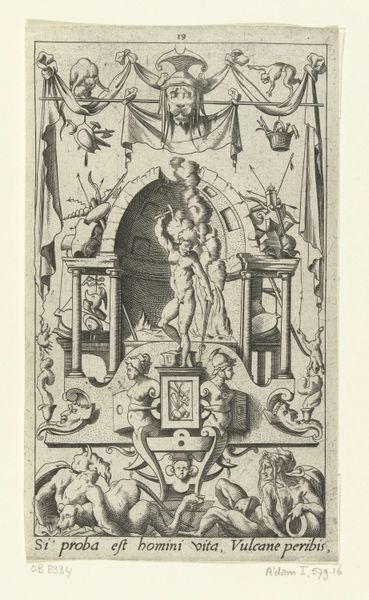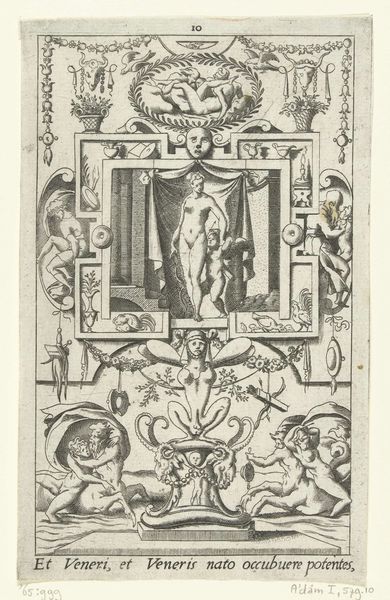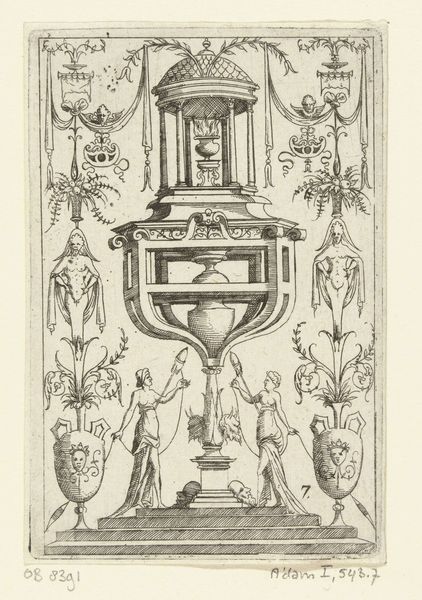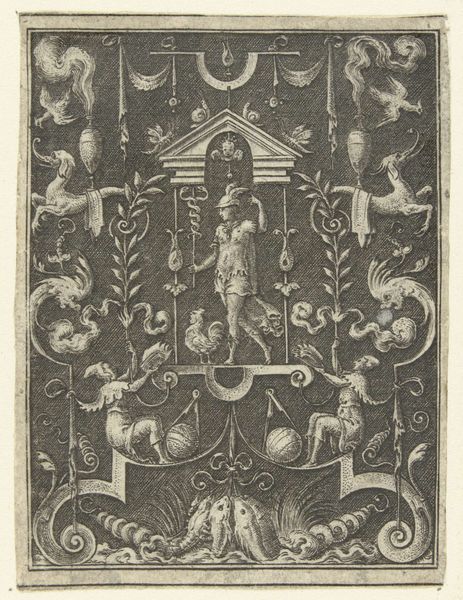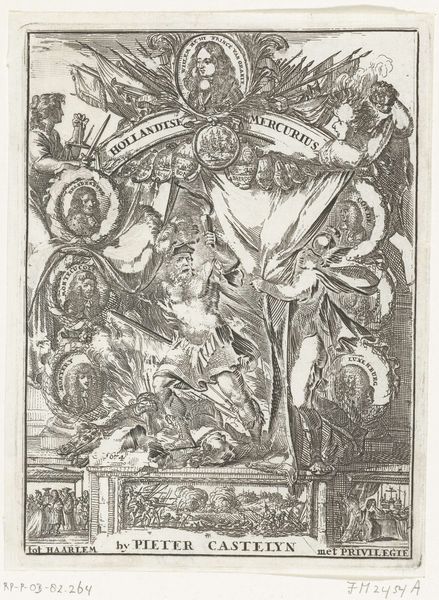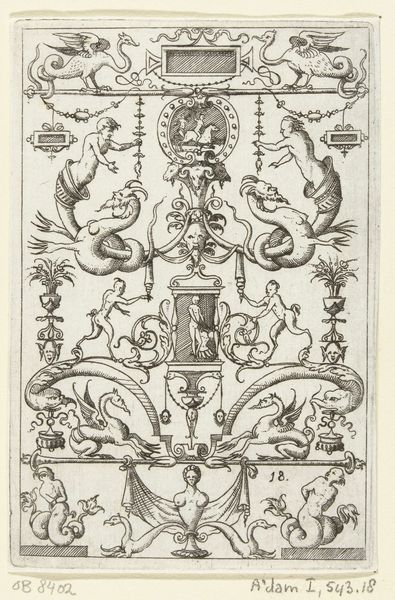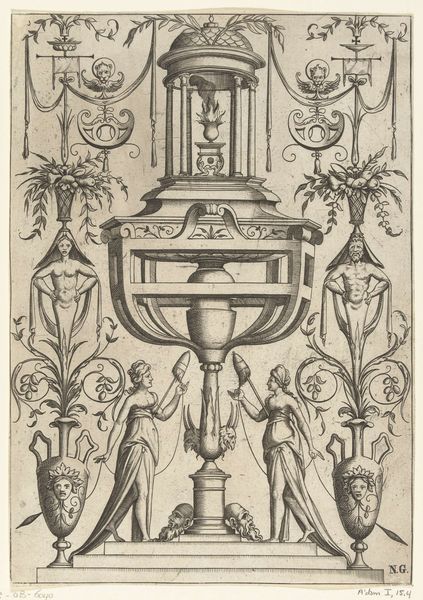
drawing, ink, pen
#
drawing
#
ink drawing
#
pen drawing
#
pen illustration
#
pen sketch
#
figuration
#
11_renaissance
#
ink
#
pen
Dimensions: height 139 mm, width 85 mm
Copyright: Rijks Museum: Open Domain
Curator: What strikes you immediately about this ornate pen and ink drawing? Editor: Its density! Every square inch teems with creatures and curlicues. It’s dizzying, like a dream you can’t quite untangle. I find myself drawn to its strangeness. Curator: This is "Groteske vlakdecoratie met een vrouw en twee hermen," or Grotesque flat decoration with a woman and two herms, a work created anonymously sometime between 1516 and 1556. Let's break down its composition. The central figure is, as the title suggests, a woman, framed by two herms – those strange, tapering figures that blend human form with abstract pedestal. Editor: Herms! That’s the word. They look like architectural elements that suddenly sprouted limbs. The artist clearly revels in this blending of forms—the way figures dissolve into ornamental foliage is kind of beautiful, kind of unsettling. Are we meant to find meaning in the symmetry? The central woman, versus the creatures that emerge on the side? Curator: Symmetry is a key element. The piece uses elaborate motifs typical of grotesque decorations, which were all the rage during the Renaissance, rediscovered from ancient Roman art. There's a calculated arrangement of motifs like vases, mythical creatures, and foliage, creating visual harmony, though an eccentric one. Editor: It's a carefully curated chaos. I like that the pen work is so incredibly precise, a meticulous control amidst the pandemonium of creatures. What do you think its intended purpose might have been? Curator: Grotesques often appeared in illuminated manuscripts or decorative prints. Given the medium of pen and ink, and its size, it's likely this was a design intended as inspiration for larger decorative projects – frescoes or engravings. Perhaps a goldsmith looking for imaginative ideas to engrave? It resides today at the Rijksmuseum. Editor: Ah, a pattern book then, a launchpad for imagination. You know, looking at it again, the faces peering out from the foliage almost seem to be mocking the classical rigidity. As if to say, "We're here too, in the shadows, the grotesque, the playful." It’s so full, like the artist couldn't bear to leave a single space untouched, they simply packed it to the brim with curiosities. Curator: It's a microcosm of the Renaissance sensibility itself: a love for classical forms combined with an embrace of the fantastical and the bizarre. Editor: It’s a world in a drawing, then. Thanks for illuminating my way.
Comments
No comments
Be the first to comment and join the conversation on the ultimate creative platform.
